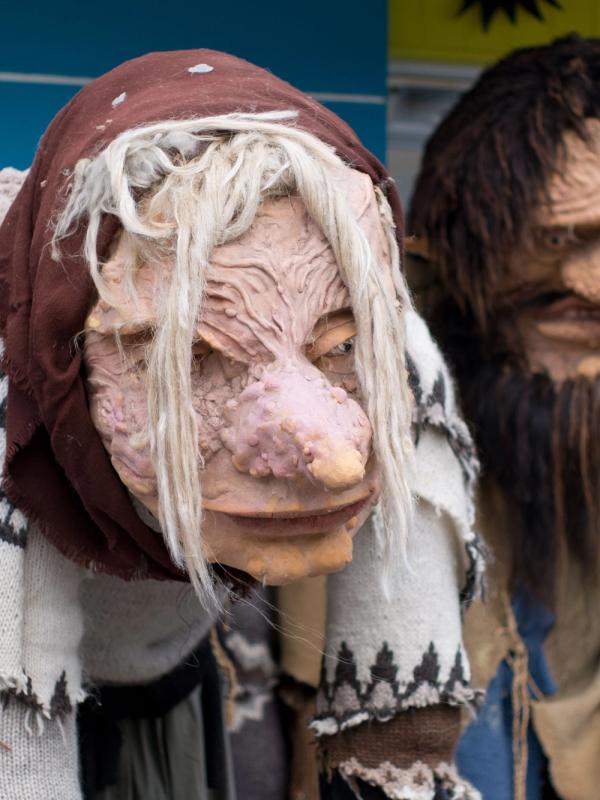
Icelandic Folklore: Elves, Huldufólk, and Trolls
Iceland is a beautiful country full of dramatic landscapes and unparalleled wonders. The variety of natural monuments here is almost endless. And many of them are unique. Places like nothing else you’ve seen before. Some even look straight out of a fantasy novel or even another planet. From the impressive glaciers to the bubbling hot springs, every corner of this island seems touched by magic. It’s not hard to understand how many have inspired tales, legends, and stories of mystical beings.
Among the many mythical figures that populate Icelandic tales, elves and "huldufólk" (hidden people) hold a special place in the hearts of the Icelandic people. These elusive beings are said to live in harmony with nature, hidden from human sight but playing an important role in the country’s cultural heritage. They show the connection Icelanders have always had with their environment. It’s a blend of ancient mythology and oral traditions that keeps the folklore alive and thriving. In this guide we will explain the different types of creatures that “live” in Iceland and answer the question: Do Icelanders really believe in them?
Key Takeaways
- There are many tales and legends in Iceland about elves and hidden people, mostly associated with particular places.
- Elves and huldufólk are different beings, but many people mix them when talking about them.
- It’s basically a tradition from other times, but some people still believe in these creatures.
Do People in Iceland Believe in Elves?
Certain stories sometimes cross a line and become part of our lives. Elves are not just fantasy figures in Iceland; they hold a special place between belief and tradition. Surveys have shown that a significant portion of the population is open to the possibility of their existence. This tradition has deep roots in the country’s culture, and even if people don’t believe in them, they don’t deny the possibility of their existence. So, it’s not just part of a long-forgotten history but something that can still be felt.
However, it’s something that is getting lost. Interestingly, older generations tend to hold these beliefs more strongly. This connection to folklore is often due to the oral traditions passed down through families. For example, a 2007 study revealed that 54% of Icelanders of older generations either believe in elves or, at least, consider their existence possible. Elders are the ones who usually tell stories about encounters with huldufólk and the importance of respecting their homes. Younger generations, while being more skeptical, usually think of the idea of elves and other creatures as something playful and fun rather than believing in them. Even those who doubt their existence acknowledge the cultural value of all this.
It’s not unusual to hear stories from Icelanders about strange happenings that can be acts of elves. For instance, when a tool has disappeared, when livestock behaves oddly, or when you avoid misfortune by pure luck. Whether or not you believe in their existence, one thing is certain: elves are an integral part of Iceland’s cultural identity.
In reality, it’s more a question of how Icelanders show a deep respect for their traditions and heritage rather than actually believing in these beings. And it’s something that, in a way, has helped preserve the natural environment.
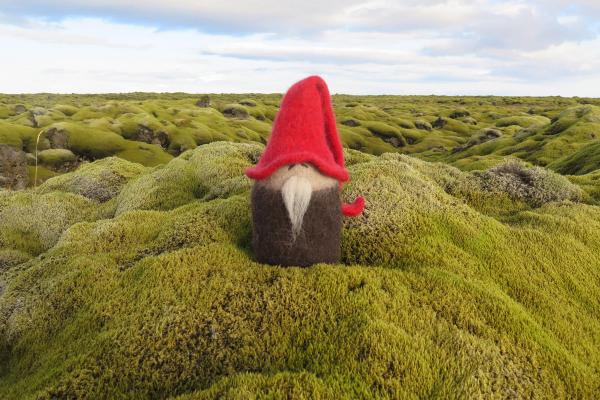
Where Does the Tradition Come From?
All the legends, lore, and stories associated with elves huldufólk are deeply tied to Iceland’s history and landscape. When Norse settlers arrived on the island in the 9th and 10th centuries, they brought with them their gods, spirits, and supernatural beings. These settlers found a harsh and unpredictable environment, where volcanic eruptions and earthquakes were common. To make sense of these powerful natural events, they created stories of beings like elves and huldufólk who lived in and controlled the landscape.
This is something that has been done in different cultures since the beginning of time. Humans have always tried to give an explanation to the things that happen to them or their surroundings. When they can’t make sense of something, they tend to create gods and beings to try to find an explanation.
In this case, Norse mythology played a crucial role in these tales. The álfar (elves) were semi-divine beings associated with fertility, beauty, and nature. Over centuries, these Norse beliefs mixed with local Icelandic traditions to create unique interpretations of elves.
Christianity’s arrival around the year 1000 also left its mark. While Christian education often tried to remove pagan beliefs, they didn’t erase them entirely. In fact, new stories emerged that combined Christian ideas with older traditions. For example, one tale says that elves are the descendants of children hidden by Eve when God visited her, punished to remain hidden from humanity forever. This blend of pagan and Christian influences shaped the folklore that is part of the country’s culture.
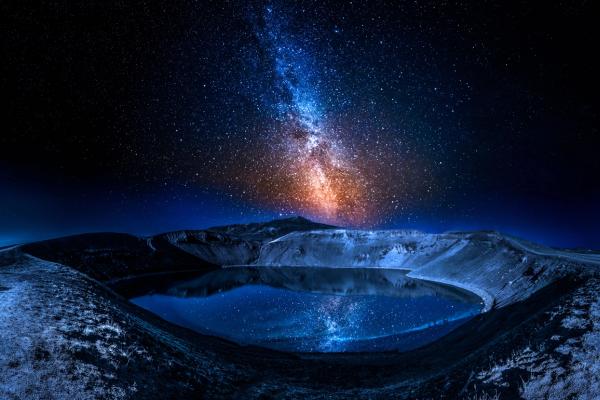
What Kind of Creatures Are Elves?
Elves in Icelandic folklore are not your average fairy tale characters. They are unique, mysterious, and deeply connected to the natural world. Here’s a closer look at the different kinds of beings that populate Icelandic stories.
Elves and Huldufólk
The terms “elves” and huldufólk are often used indistinctly, but they are different beings. Elves (álfar) are traditionally described as taller, more beautiful, and more powerful than humans. They are guardians of nature and are said to possess magical abilities. They are similar to the ones depicted in The Lord of the Rings.
Huldufólk, or hidden people, are similar to humans in appearance and behavior but live parallel lives in an unseen world. They are believed to live in rocks, hills, and other natural formations. They only come to our realm under specific conditions. Unlike elves, who are often seen as beings from another world, huldufólk are portrayed as relatable figures who coexist with humans in a hidden dimension. The Icelandic tradition talks much more about huldufólk than elves.
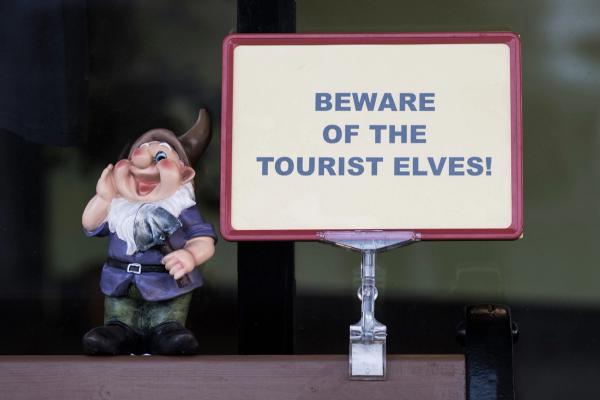
The Yule Lads
One of the most beloved aspects of Icelandic folklore is the Yule Lads, a group of thirteen mischievous figures who visit children during the thirteen nights before Christmas. Each Yule Lad has a unique personality and a favorite prank. There’s one, for instance, who steals spoons to lick off food scraps, while another sneaks around peeking through windows.
The Yule Lads are the children of Grýla, a terrifying troll who is said to kidnap and eat naughty children. Although they have a scary origin, they have evolved into playful and nice beings. They are the Icelandic version of Santa Claus, and on Christmas, they bring gifts to well-behaved children.
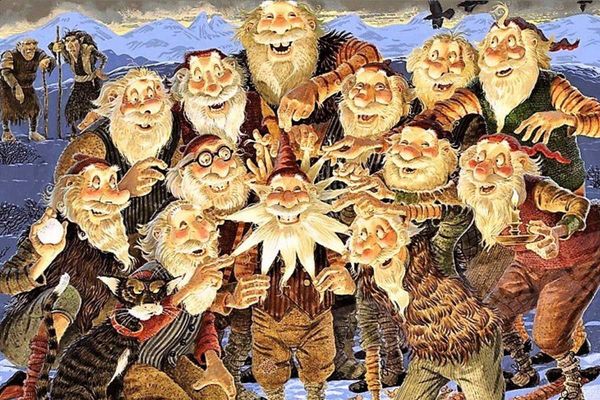
Trolls
Trolls are another cornerstone of Icelandic folklore. They are the representation of the wild and untamed forces of nature. These creatures are usually depicted as big, rude, and not particularly clever. Trolls are closely tied to the Icelandic landscape. There are many rock formations, such as the Lóndrangar cliffs or Hvitserkur, that are said to be petrified trolls that were caught by sunlight.
Unlike elves and huldufólk, trolls are hostile or indifferent to humans. They add a darker, more primal layer to Iceland’s folklore.
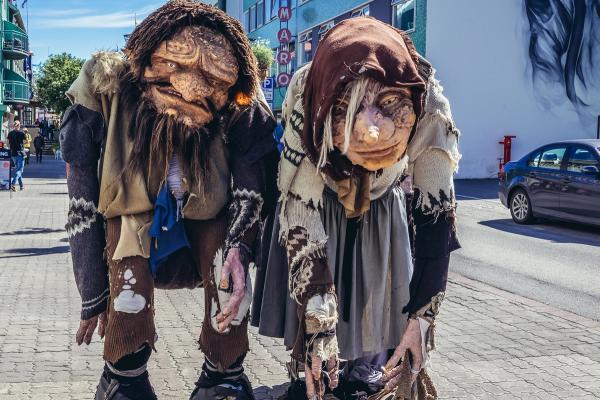
Where Do Elves Live?
As mentioned, Icelandic mythical beings are strongly connected to the country’s landscapes. Elves are believed to live in natural features such as rocks, hills, and lava fields. Some landscapes are considered sacred or important to these beings, and disturbing them is considered bad luck. This belief has influenced modern life in surprising ways.
Construction projects, for instance, have been modified or halted to avoid disturbing areas believed to be elf dwellings. Roads have been designed with a detour, and houses have changed their final location to not be built over rocks said to be homes of huldufólk. One famous example is Huldumannssteinn, nicknamed the “elf rock” or “elf stone.” It’s a boulder in Reykjavik that was carefully relocated during construction to ensure it wasn’t damaged because it’s believed to be the home of the hidden people.
This idea isn’t just about superstition—it’s also a way of preserving the country’s unique landscapes and traditions. Whether or not you believe in elves, there’s something inspiring about a culture that respects its environment so deeply.

Norse Mythology in Iceland
To truly understand Icelandic mystical creatures, it’s essential to explore their roots in Norse mythology. The álfar of Norse myth were closely tied to the Vanir gods, associated with fertility and nature. These elves lived in a realm called Álfheimr, one of the Nine Worlds in Norse cosmology.
When Norse settlers arrived in Iceland, they brought these myths with them. The inspiring Icelandic landscape—with its glaciers, volcanoes, and waterfalls—probably reinforced their belief in supernatural beings. Over time, the álfar of Norse mythology evolved into the elves and huldufólk of Icelandic folklore.
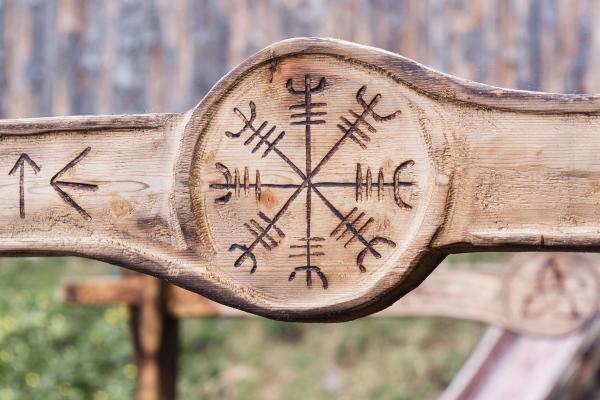
Tales and Traditions
Icelandic folklore is brimming with stories of humans and huldufólk interacting in different ways. These tales, like fables, often carry lessons about respect, kindness, and the power of nature.
Respecting Elf Dwellings
One of the most common themes is the importance of respecting elves' homes. Farmers who disturb rocks or fields believed to be where elves live are said to suffer misfortune, such as a bad harvest or lost cattle. On the other hand, those who show respect are rewarded. These stories are both moral lessons and reminders to live in harmony with the land.
Helping the Huldufólk
Another recurring fable concerns humans who help hidden people. One tale tells the story of a farmer who assisted an elf woman during childbirth and was rewarded with prosperity.
Seasonal Connections
Certain times of the year, like Christmas and New Year’s Eve, are more strongly connected to elves and huldufólk than others. During these times, they are thought to move between homes or become more visible to humans.
Conclusion
Believing in elves and huldufólk is more than just a surprising aspect of Icelandic culture. It’s a living tradition that reflects the deep bond between the natives and their environment. These stories remind us to respect nature and the traditions our ancestors had. They are also a playful way to see the magical side of life. There’s no need to believe in these creatures. You just need to understand where it all comes from and the role it plays in Iceland's heritage.

